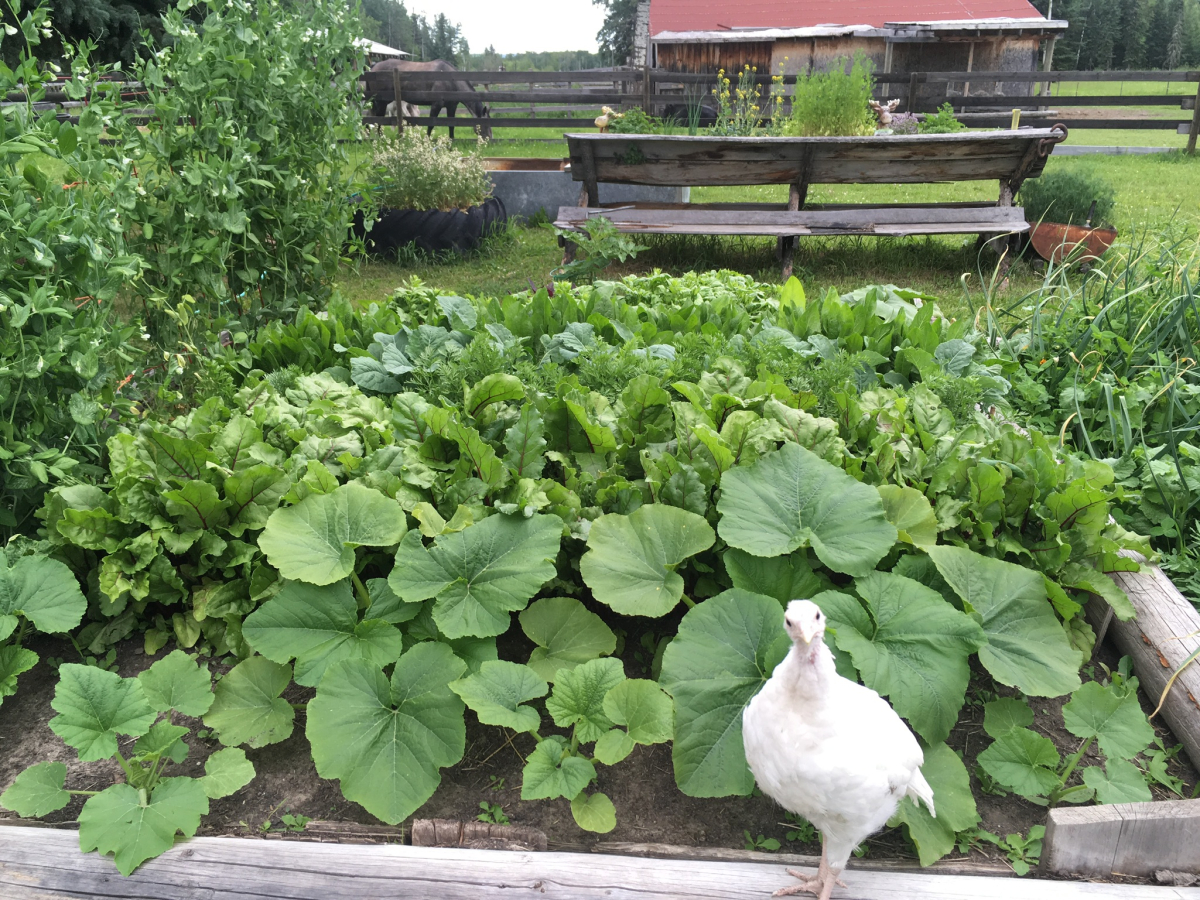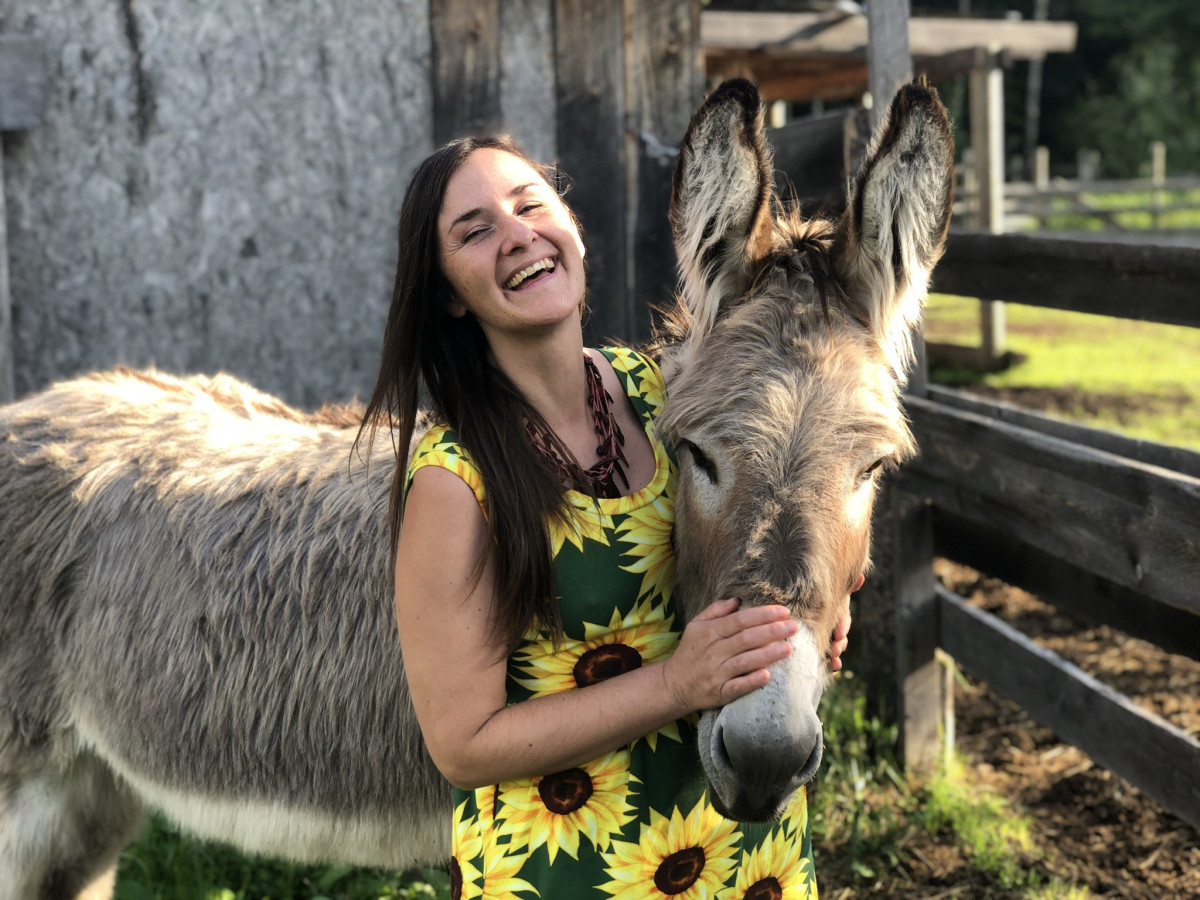Support strong Canadian climate journalism for 2025
For Tiffany Traverse, the next two growing seasons will be busy studying beans, oats — and lots of dung.
The Peace Country farmer is collaborating with two federal soil scientists to study how different kinds of manure can enhance the region’s clay-filled soil. But unlike most government research, which focuses on large-scale farming, the project will look at small-scale agriculture — and blend western agricultural science and Indigenous farming methods.
“I really wanted to seek a way that we could do research together that would not only satisfy their super nerdy western science (on) soil health … but also to have me come in and shake things up a little bit, to bring in some of the Indigenous knowledge that I have,” said Traverse, who is of mixed Secwépemc/settler ancestry. She has spent recent years learning seed saving and farming techniques grounded in Indigenous methodologies from Rowen White, a Mohawk seed steward and farmer.

The two-year project will test how the manure produced by Traverse’s horses and donkeys, cattle, pigs, poultry, and vermicompost, or worm compost, impacts soil and plant health. All the manure will be produced on-farm and applied to small plots, an unusual approach for government-funded research, which typically uses external fertilizers and large-scale plots. The team’s choice of crops — heirloom fava beans the first season, and oats in the second — differs from the norm, Traverse said.
“It’s a bit of a closed loop. It’s this ideal integrated crop (and) livestock system,” said Monika Gorzelak, a soil scientist with Agriculture and Agri-Food Canada (AAFC) who will be working alongside Traverse and two other AAFC researchers, Bharat Shrestha and Greg Semach, on the project.
That’s a big shift from conventional farming practices, she explained.
Industrial food production generally separates livestock and crops, filling ponds near feedlots with manure while fields are often chronically nutrient-deprived, and crops require artificial fertilizers.

Fertilizers and livestock production combined are responsible for most of Canada’s agricultural greenhouse gas emissions, about eight per cent of Canada’s total emissions, according to Environment and Climate Change Canada. The widespread practice of monocropping — planting vast fields with a single crop and feeding it with artificial fertilizers — is also tied to declining pollinator populations and biodiversity.
Traverse’s approach is different.
“I love looking at systems holistically, and that’s what Tiffany is doing. She’s got multiple different kinds of animals, different manures,” said Gorzelak. “It’s really exciting that there’s a push to look at alternative (farming) systems … and I would argue it's essential if we want to reduce greenhouse gas emissions, which we absolutely have to.”

That holistic vision extends beyond the relationship between manure and soil health, Traverse explained. The moon dictates when she plants, tends, and harvests; she will feed family, friends, and community with the beans and oats she grows. And the project wouldn’t be successful without fostering a healthy relationship with Gorzelak and Shrestha, she said.
“There’s a lot more back and forth” between the scientists and farmer about the study than usual, she said. Yet despite occasional differences, the project has so far come together smoothly.
“Understanding (Traverse’s) traditional knowledge and interpreting … western science will be really cool. It’s tough to document and acknowledge traditional knowledge (in research) and try to find common ground for agricultural sustainability,” said Shrestha. Originally from rural Nepal, he noted that Traverse’s farming techniques are similar to those used by his family on their farm.

“We can leverage that skill and knowledge (in the project),” he said. “We will prepare detailed guidelines on how to sample, but all the planting and crop management will be done using (Traverse’s) knowledge and skill.”
The results could help lay the groundwork for more diverse and resilient farms in the Peace Country — an exciting prospect in light of a shifting climate.
While the overall impacts of a changing climate remain unclear, it is likely the Peace Region will get warmer and welcome more crops. Understanding how to enhance soil health in the region’s clay-filled earth sustainably is key to making the region’s farms better adapted to the changes, Shrestha said.
Still, Traverse and the scientists were clear that a single study only marks the start of that knowledge-gathering. For the region to remain resilient, continuous research drawing on Indigenous and western methodologies will be needed.
“The research needs to keep happening,” said Traverse. “We need to keep growing and adapting … the methodologies that we’re using to do research need to be adapting. I’m hoping there’s going to be more money set aside for this type of research that’s actually done on farms.”







Comments
An important study no doubt. I suggest considering adding another on site manure that is endemic to the human condition and historically was an important component of the recycling of the nutrient and health of soils used for human food production. In our advanced societies today that component is treated as a waste, made toxic and to the extent possible kept out of the Biosphere cycle. Human poop and urine! It seems counter intuative to steadfastly ignore potential benefit to utilizing this component of our own life cycles.
As a kid growing up on a hill farm in NS I recall my dad taking the accumulations from the outhouse to a garden and adding it to the fertalizing mix of horse and cow manure . It was a very productive vetatable garden!
Especially considering the burden of human occupation and consumption on this beleaguered planet, utilizing human poop seems like the least we could do. Of course the major barrier will be those people who's sh-t doesn't stink but who go into a dead faint at the thought that their poop might be recycled into the food they eat. EUWWW!
I believe there is a west coast branch of the Donkey Sanctuary Canada. Selling their donkey manure could be a welcome cash benefit to their charitable operation.
Donkeys are great animals to have around—if you can give them the attention they need. We bought a place on condition we take the donkey somewhere in the forested acreage out back. I found him a few days later all by himself, aloof, but not shy. I thought he was a mule he was so big. His hooves were terrible so the ferrier came, said he was the biggest donkey he’d ever seen. I put a gate at the Queen’s road so he could hang out with us and eat some grass. An impaired driver who’d crashed into the ditch one night stole him to ride home, had to get him back, letting kids ride on him as we passed their places—he loved it. He’d been alone in the woods for many years, eating what the deer ate. He was about 40 years old when we got him.
But both of us worked, me in the woods for weeks on end. He started getting resentful cuz I wasn’t around enough. He’d stand in the driveway and stare at me through the kitchen winda, drinking my morning coffee. One morning after I got back from camp the night before, he was standing in the driveway making sure I could see him; when he was sure (I put the newspaper down to watch) he backed up toward me, nestling the side mirror on my pickup—which was between us—right up the crack of his butt cheeks, nice n snug and, looking back at me, straight in the eye, gives his hips a little swing and snaps it clean off, tales two steps ahead—still staring straight at me—and ejects it out onto the ground before turning and walking away in a high peeve. After that, everything to do with me (and not my wife) he’d damage after I got back from camp—I suspect he pushed the gas lawn mower into the range of our hound, chained up whilst we were away, we got back from shopping and it was completely chewed up like chewing gum—all except the gas tank which still had a bit of fuel in it but was totally flattened. Figure a dog couldn’t have done all that by himself. The donkey brayed loud and long. One day he bit the top off a yellow pine I had in a pot on the porch. That was my limit.
Fortunately our daughter was boarding horses on the Big Island, so we spent a day with a comealong and winched him into the horse-trailer. We could hear him braying as he left on the ferry—almost all the way across (about a mile). Wouldn’t come out of the trailer for days at the farm. But eventually he did and made friends with the horses which, being a boarding stable, changed frequently — normally causing some intemperate behaviour which our old donkey was happy to break up. If he saw two roosters fighting, he run and break ‘em up. Nobody messed with him, not dogs, not cougars, not nobody. He was like the horse police. He loved it: lots of company and things to do keeping the horses in line.
He lived on the farm for some years, musta been over fifty time he passed on. I missed him at home—sort of. Used to watch me chop wood, if I left a beer-can untended, he’d drink it. He loved tobacco, smoke or chaw. He always wanted to eat (I guess) my cowboy hat. He was the greatest—smarter n any horse I ever seen.
Come to think of it, our garden did pretty good with his manure. Then, without him, we decided to move. But we could still visit.
If I had my druthers, I have a donkey sooner n a horse—any day! You need to spend time with them. They have “character.”